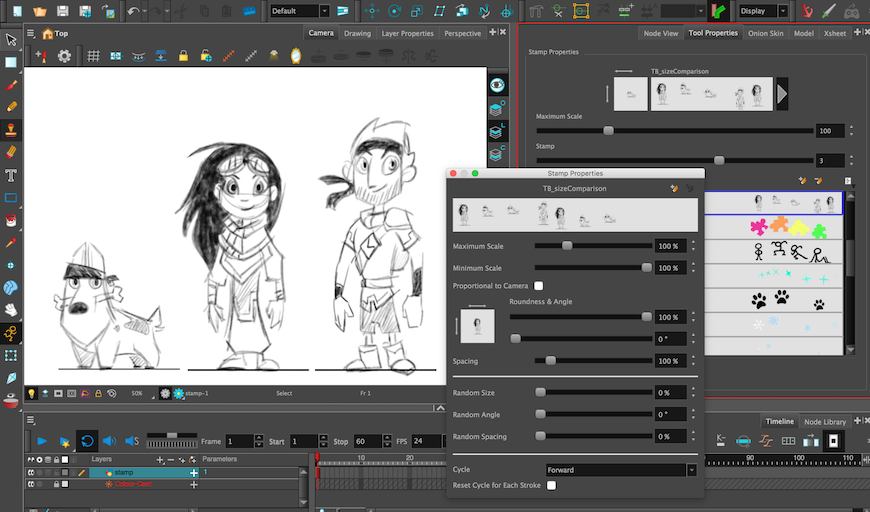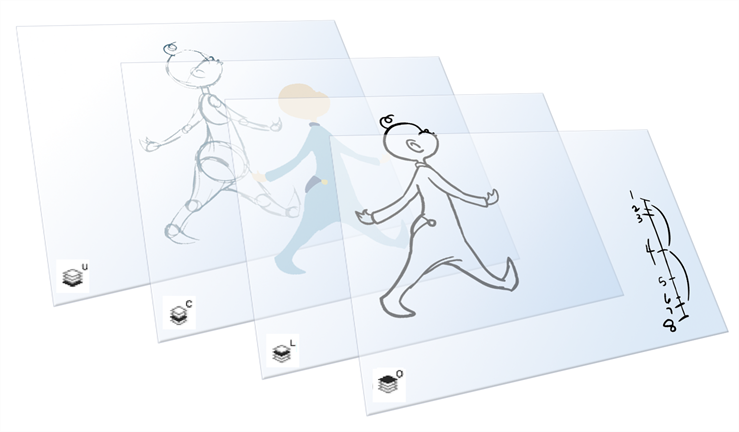

The Flash brush tools are just barely workable and blobby, whereas the Harmony brush and pencil tools produce very clean results, and are customisable. Flash is easy to learn (the result of a fundamentally simple program with almost no updates in a decade), whereas Harmony takes much longer to learn (the result of a more ambitious scope and an often bewildering number of features). The contrast between Flash and Harmony is night and day. Assuming that Flash was heading to the glue factory, I jumped at the chance to switch programs. In mid 2014, asked me to learn Harmony, in order to create an introductory course for them. Long story short, by CS6, I had stopped paying attention to Flash ‘upgrades’. If Photoshop implemented such a ‘feature’, all hell would break loose… For example, the quirky but functional Bones/IK tool (which I used to create the character animation for the Disney game ‘Where’s My Water’) was removed worse, object level undo was deleted (making multiple undos across symbols a dangerous activity!). I had accepted the fact that no real improvements would be added to Flash, but I blew a gasket with the CS6 release, which not only didn’t add features, but removed existing ones.
#TOONBOOM HARMONY BAKE DRAWING MOVIE#
A screenshot from this movie is currently used in the catalog for the Louvre’s exhibition ‘A Brief History of the Future’ (page 64).įlash, even with its limitations, can be used to create interesting work. It deals with the impossibility of infinite growth on a finite planet. To illustrate, here is a link to my 35 minute documentary ‘There’s No Tomorrow’, created over a period of 7 years. This, in spite of the fact that many Flash scenes can be mind-bendingly complex. ‘Flash Animator’ is often synomymous with ‘hackwork’, and animators who work in Flash are routinely paid less than a CG animator, regardless of their relative merits as animators. Partly as a result of this stagnation, the term ‘Flashy’ has become a pejorative. Later versions also came with bloat, growing slower and buggier with each version.

For designers and animators there has been little reason to upgrade. I began using Flash in 1999, and still use Macromedia Flash v8 (2005) some animators I know stick with Adobe Flash CS3 (2007). These features created the illusion of development where little or none existed. When new features have been added to Flash, such as the 3D rotate tool, or new motion tween, they have been half-baked and weak. The best extensions though, could not modify core aspects of the program, such as the mummified brush and pencil tools, the quirky shape tweening, the lack of z-depth, etc.
#TOONBOOM HARMONY BAKE DRAWING UPDATE#
Of course, the worst choice would have been the third: do nothing, and let the animal suffer.Īs far as artists are concerned, the policy of “do nothing” has been the status of every Flash update since CS3, itself little more than a patch of Macromedia Flash v8 (the final Macromedia version, released in 2005).ĩ9% of the programming team’s focus has been on updating the actionscript/ programming side, leaving artists and animators to scrounge third party extensions to frankenstein extra functionality. Relax, my sister is $3,000 the poorer, and the cat is well. The following are my thoughts, as they relate to animators and designers, the second class citizens of the Flash world.Ī few weeks ago my sister’s cat was hit by a car, breaking the cat’s left hip. By now, many will have heard about Adobe’s decision to bid farewell to Flash, at least in name.


 0 kommentar(er)
0 kommentar(er)
